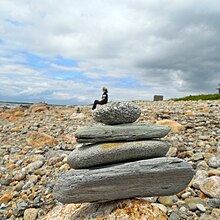CAMERA SHOTS AND ANGLES
CAMERA SHOTS
There are many ways to frame a subject within a shot, which can range from showing their entire body to fixating on a finer detail, such as their eyes. In choosing the most fitting shot, you’ll need to bear in mind the message that you’re trying to communicate to your audience.
Here are some of the most common types of shots and how you can go about using them:
Establishing shot

Often included at the beginning of a scene, the establishing shot helps to build ambiance and may give a nod towards the context of what’s to come. It generally comes in the form of a long shot and indicates where (and sometimes when) the scene is taking place.
Full shot

The full shot is just as the name implies and shows the entire body of the subject from head to toe. This shot tends to focus more on the character’s movement and gestures, rather than their state of mind.
Medium shot

Also known as the ¾ shot, the medium shot typically shows the subject from the knees up. It allows the viewer to see the background environment and the character’s gestures, while still being close enough to capture their emotions.
Close shot

With a close shot, the subject’s head/face takes up the majority of the frame and therefore, allows their reactions and emotions to dictate the scene. The subject becomes the prominent focus and helps the audience build a personal connection, without being distracted by background interferences.
Extreme close shot

An extreme close shot is so close that only one specific detail, such as a person’s eyes or mouth, can be seen. Because of the unnaturally close nature of the shot, it should be used sparingly, but when used appropriately, an ECS can be incredibly effective at adding drama to a scene. It allows the viewer to see details that may have otherwise gone unnoticed and can really accentuate the emotions that the subject is experiencing.
ANGLES
low-angle shot (LA) is taken from below the subject and has the power to make the subject look powerful or threatening.

An up shot is taken from below the eye-level of the subject and creates the perception that the viewer is looking at them from a lower perspective. This type of shot can give the impression that the subject is in some way powerful, heroic or even dangerous.
The high angle shot can make the subject look small or weak or vulnerable

A down shot, in contrast to an up shot, is taken from above the eye-level of the subject and can make the subject seem vulnerable or powerless.

This type of shot is taken from behind the shoulder of another character and typically frames the subject in a medium or close shot. It is particularly effective in group conversation scenes and helps establish which characters are speaking to each other.

A two shot presents two characters together within the same frame. It’s a natural means of introducing both people and can be used to shed light on their relationship with one another. Different variations of the two shot can be applied to deliver different messages about the characters. For example, when characters are positioned next to each other, it may give the impression that they have equal prominence within the scene.

They also include the eye-level camera angle and the point of view shot.
A high-angle shot (HA) is a shot in which the camera is physically higher than the subject and is looking down upon the subject.
A neutral shot or eye-level (EL) shot has little to no psychological effect on the viewer. This shot is when the camera is level or looking straight on with the subject.
A high-angle shot (HA) is a shot in which the camera is physically higher than the subject and is looking down upon the subject.
A neutral shot or eye-level (EL) shot has little to no psychological effect on the viewer. This shot is when the camera is level or looking straight on with the subject.
A point of view shot (POV) shows the viewer the image through the subject's eye. Some POV shots use hand-held cameras to create the illusion that the viewer is seeing through the subject's eyes.
Bird's eye shot or bird's-eye view[ shots are taken directly above the scene to establish the landscape and the actors relationship to it.
Worm's-eye view is a shot that is looking up from the ground, and is meant to give the viewer the feeling that they are looking up at the character from way below and it is meant to show the view that a child or a pet would have. When considering the camera angle one must remember that each shot is its own individual shot and the camera angle should be taken in context of the scene and film.
A dutch angle, also called a canted angle or even simply the tilted angle, is an angle in which the camera itself is tilted to the left or the right. The unnatural angle gives the viewer a feeling that world is out of balance or psychological unrest.




Comentarios
Publicar un comentario